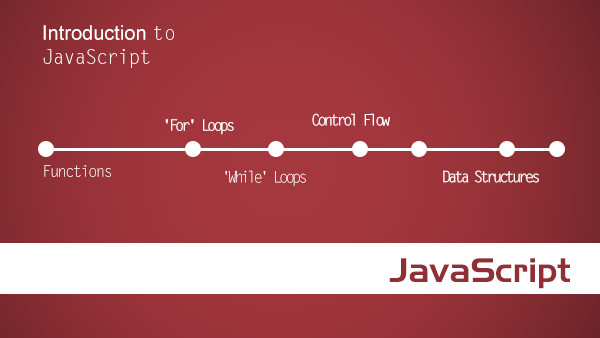原文链接:Data Structures for Beginners: Arrays, HashMaps, and Lists
众成翻译地址:初学者应该了解的数据结构:Array、HashMap 与 List
校对:Volong
挺长的一篇文章,建议不太熟悉数据结构的同学慢慢阅读一下这篇文章,希望对你有所帮助~以下是译文正文:

当开发程序时,我们(通常)需要在内存中存储数据。根据操作数据方式的不同,可能会选择不同的数据结构。有很多常用的数据结构,如:Array、Map、Set、List、Tree、Graph 等等。(然而)为程序选取合适的数据结构可能并不容易。因此,希望这篇文章能帮助你了解(不同数据结构的)表现,以求在工作中合理地使用它们。
本文主要聚焦于线性的数据结构,如:Array、Set、List、Sets、Stacks、Queues 等等。
本篇是以下教程的一部分(译者注:如果大家觉得还不错,我会翻译整个系列的文章):
初学者应该了解的数据结构与算法(DSA)
初学者应该了解的数据结构:Array、HashMap 与 List 即本文
初学者应该了解的数据结构:Tree (敬请期待)
(操作)数据结构的时间复杂度
下表是本文所讨论内容的概括。
加个书签、收藏或分享本文,以便不时之需。
* = 运行时分摊
| 数据结构 | 插入 | 访问 | 查找 | 删除 | 备注 |
|---|---|---|---|---|---|
| Array | O(n) | O(1) | O(n) | O(n) | 插入最后位置复杂度为 O(1)。 |
| (Hash)Map | O(1)* | O(1)* | O(1)* | O(1)* | 重新计算哈希会影响插入时间。 |
| Map | O(log(n)) | - | O(log(n)) | O(log(n)) | 通过二叉搜索树实现 |
| Set(使用 HashMap) | O(1)* | - | O(1)* | O(1)* | 由 HashMap 实现 |
| Set (使用 List) | O(n) | - | O(n)] | O(n) | 通过 List 实现 |
| Set (使用二叉搜索树) | O(log(n)) | - | O(log(n)) | O(log(n)) | 通过二叉搜索树实现 |
| Linked List (单向) | O(n) | - | O(n) | O(n) | 在起始位置添加或删除元素,复杂度为 O(1) |
| Linked List (双向) | O(n) | - | O(n) | O(n) | 在起始或结尾添加或删除元素,复杂度为 O(1)。然而在中间位置是 O(n)。 |
| Stack (由 Array 实现) | O(1) | - | - | O(1)] | 插入与删除都遵循与后进先出(LIFO) |
| Queue (简单地由 Array 实现) | O(n) | - | - | O(1) | 插入(Array.shift)操作的复杂度是 O(n) |
| Queue (由 Array 实现,但进行了改进) | O(1)* | - | - | O(1) | 插入操作的最差情况复杂度是 O(n)。然而分摊后是 O(1) |
| Queue (由 List 实现) | O(1) | - | - | O(1) | 使用双向链表 |
注意: 二叉搜索树 与其他树结构、图结构,将在另一篇文章中讨论。
原始数据类型
原始数据类型是构成数据结构最基础的元素。下面列举出一些原始原始数据类型:
整数,如:1, 2, 3, …
字符,如:a, b, "1", "*"
布尔值, true 与 false.
浮点数 ,如:3.14159, 1483e-2.
Array
数组可由零个或多个元素组成。由于数组易于使用且检索性能优越,它是最常用的数据结构之一。
你可以将数组想象成一个抽屉,可以将数据存到匣子中。
数组就像将东西存到匣子中的抽屉

当你想查找某个元素时,你可以直接打开对应编号的匣子(时间复杂度为 O(1))。然而,如果你忘记了匣子里存着什么,就必须逐个打开所有的匣子(时间复杂度为 O(n)),直到找到所需的东西。数组也是如此。
根据编程语言的不同,数组存在一些差异。对于 JavaScript 和 Ruby 等动态语言而言,数组可以包含不同的数据类型:数字,字符串,对象甚至函数。而在 Java 、 C 、C ++ 之类的强类型语言中,你必须在使用数组之前,定好它的长度与数据类型。JavaScript 会在需要时自动增加数组的长度。
Array 的内置方法
根据编程序言的不同,数组(方法)的实现稍有不同。
比如在 JavaScript 中,我们可以使用 unshift 与 push 添加元素到数组的头或尾,同时也可以使用 shift 与 pop 删除数组的首个或最后一个元素。让我们来定义一些本文用到的数组常用方法。
常用的 JS 数组内置函数
| 函数 | 复杂度 | 描述 |
|---|---|---|
| array.push(element1[, …[, elementN]]) | O(1) | 将一个或多个元素添加到数组的末尾 |
| array.pop() | O(1) | 移除数组末尾的元素 |
| array.shift() | O(n) | 移除数组开头的元素 |
| array.unshift(element1[, …[, elementN]]) | O(n) | 将一个或多个元素添加到数组的开头 |
| array.slice([beginning[, end]]) | O(n) | 返回浅拷贝原数组从 beginning 到 end(不包括 end)部分组成的新数组 |
| array.splice(start[, deleteCount[, item1[,…]]]) | O(n) | 改变 (插入或删除) 数组 |
向数组插入元素
将元素插入到数组有很多方式。你可以将新数据添加到数组末尾,也可以添加到数组开头。
先看看如何添加到末尾:
function insertToTail(array, element) { array.push(element); return array; } const array = [1, 2, 3]; console.log(insertToTail(array, 4)); // => [ 1, 2, 3, 4 ]根据规范,push 操作只是将一个新元素添加到数组的末尾。因此,
Array.push的时间复杂度度是 O(1)。
现在看看如添加到开头:
function insertToHead(array, element) { array.unshift(element); return array; } const array = [1, 2, 3]; console.log(insertToHead(array, 0));// => [ 0, 1, 2, 3, ]你觉得 insertToHead 函数,时间复杂度是什么呢?看起来和上面(push)差不多,除了调用的方法是 unshift 而不是 push。但这有个问题,unshift 是通过将数组的每一项移到下一项,腾出首项的空间来容纳新添加的元素。所以它是遍历了一次数组的。
Array.unshift的时间复杂度度是 O(n)。
访问数组中的元素
如果你知道待查找元素在数组中的索引,那你可以通过以下方法直接访问该元素:
function access(array, index) { return array[index]; } const array = [1, 'word', 3.14, { a: 1 }]; access(array, 0);// => 1 access(array, 3);// => {a: 1}正如上面你所看到的的代码一样,访问数组中的元素时间是恒定的:
访问数组中元素的时间复杂度是 O(1)。
注意:通过索引修改数组的值所花费的时间也是恒定的。
在数组中查找元素
如果你想查找某个元素但不知道对应的索引时,那只能通过遍历数组的每个元素,直到找到为止。
function search(array, element) { for (let index = 0; index < array.length; index++) { if (element === array[index]) { return index; } } } const array = [1, 'word', 3.14, { a: 1 }]; console.log(search(array, 'word'));// => 1 console.log(search(array, 3.14));// => 2鉴于使用了 for 循环,那么:
在数组中查找元素的时间复杂度是 O(n)
在数组中删除元素
你觉得从数组中删除元素的时间复杂度是什么呢?
先一起思考下这两种情况:
从数组的末尾删除元素所需时间是恒定的,也就是 O(1)。
然而,无论是从数组的开头或是中间位置删除元素,你都需要调整(删除元素后面的)元素位置。因此复杂度为 O(n)。
Talk is cheap, let’s do the code!
function remove(array, element) { const index = search(array, element); array.splice(index, 1); return array; } const array1 = [0, 1, 2, 3]; console.log(remove(array1, 1));// => [ 0, 2, 3 ]我们使用了上面定义的 search 函数来查找元素的的索引,复杂度为 O(n)。然后使用JS 内置的 splice 方法,它的复杂度也是 O(n)。那(删除函数)总的时间复杂度不是 O(2n) 吗?记住,(对于时间复杂度而言,)我们并不关心常量。
对于上面列举的两种情况,考虑最坏的情况:
在数组中删除某项元素的时间复杂度是 O(n)。
数组方法的时间复杂度
在下表中,小结了数组(方法)的时间复杂度:
数组方法的时间复杂度
| 操作方法 | 最坏情况 |
|---|---|
访问 (Array.[]) | O(1) |
添加新元素至开头 (Array.unshift) | O(n) |
添加新元素至末尾 (Array.push) | O(1) |
| 查找 (通过值而非索引) | O(n) |
删除 (Array.splice) | O(n) |
HashMaps
HashMap有很多名字,如 HashTableHashMap、Map、Dictionary、Associative Array 等。概念上它们都是一致的,实现上稍有不同。
哈希表是一种将键 映射到 值的数据结构。
回想一下关于抽屉的比喻,现在匣子有了标签,不再是按数字顺序了。
HashMap 也和抽屉一样存储东西,通过不同标识来区分不同匣子。
此例中,如果你要找一个玩具,你不需要依次打开第一个、第二个和第三个匣子来查看玩具是否在内。直接代开被标识为“玩具”的匣子即可。这是一个巨大的进步,查找元素的时间复杂度从 O(n) 降为 O(1) 了。
数字是数组的索引,而标识则作为 HashMap 存储数据的键。HashMap 内部通过 哈希函数 将键(也就是标识)转化为索引。
至少有两种方式可以实现 hashmap:
数组:通过哈希函数将键映射为数组的索引。(查找)最差情况: O(n),平均: O(1)。
二叉搜索树: 使用自平衡二叉搜索树查找值(另外的文章会详细介绍)。 (查找)最差情况: O(log n),平均:O(log n)。
我们会介绍树与二叉搜索树,现在先不用担心太多。实现 Map 最常用的方式是使用 数组与哈希转换函数。让我们(通过数组)来实现它吧
通过数组实现 HashMap
正如上图所示,每个键都被转换为一个 hash code。由于数组的大小是有限的(如此例中是10),(如发生冲突,)我们必须使用求模函数找到对应的桶(译者注:桶指的是数组的项),再循环遍历该桶(来寻找待查询的值)。每个桶内,我们存储的是一组组的键值对,如果桶内存储了多个键值对,将采用集合来存储它们。
我们将讲述 HashMap 的组成,让我们先从哈希函数开始吧。
哈希函数
实现 HashMap 的第一步是写出一个哈希函数。这个函数会将键映射为对应(索引的)值。
完美的哈希函数 是为每一个不同的键映射为不同的索引。
借助理想的哈希函数,可以实现访问与查找在恒定时间内完成。然而,完美的哈希函数在实践中是难以实现的。你很可能会碰到两个不同的键被映射为同一索引的情况,也就是 冲突。
当使用类似数组之类的数据结构作为 HashMap 的实现时,冲突是难以避免的。因此,解决冲突的其中一种方式是在同一个桶中存储多个值。当我们试图访问某个键对应的值时,如果在对应的桶中发现多组键值对,则需要遍历它们(以寻找该键对应的值),时间复杂度为 O(n)。然而,在大多数(HashMap)的实现中, HashMap 会动态调整数组的长度以免冲突发生过多。因此我们可以说分摊后的查找时间为 O(1)。本文中我们将通过一个例子,讲述分摊的含义。
HashMap 的简单实现
一个简单(但糟糕)的哈希函数可以是这样的:
class NaiveHashMap { constructor(initialCapacity = 2) { this.buckets = new Array(initialCapacity); } set(key, value) { const index = this.getIndex(key); this.buckets[index] = value; } get(key) { const index = this.getIndex(key); return this.buckets[index]; } hash(key) { return key.toString().length; } getIndex(key) { const indexHash = this.hash(key); const index = indexHash % this.buckets.length; return index; } }我们直接使用 buckets 而不是抽屉与匣子,相信你能明白喻义的意思 :)
HashMap 的初始容量(译者注:容量指的是用于存储数据的数组长度,即桶的数量)是2(两个桶)。当我们往里面存储多个元素时,通过求模 % 计算出该键应存入桶的编号(,并将数据存入该桶中)。
留意代码的第18行(即 return key.toString().length;)。之后我们会对此进行一点讨论。现在先让我们使用一下这个新的 HashMap 吧。
// Usage: const assert = require('assert'); const hashMap = new NaiveHashMap(); hashMap.set('cat', 2); hashMap.set('rat', 7); hashMap.set('dog', 1); hashMap.set('art', 8); console.log(hashMap.buckets); /* bucket #0: <1 empty item>, bucket #1: 8 */ assert.equal(hashMap.get('art'), 8); // this one is ok assert.equal(hashMap.get('cat'), 8); // got overwritten by art assert.equal(hashMap.get('rat'), 8); // got overwritten by art assert.equal(hashMap.get('dog'), 8); // got overwritten by art 这个 HashMap 允许我们通过 set 方法设置一组键值对,通过往 get 方法传入一个键来获取对应的值。其中的关键是哈希函数,当我们存入多组键值时,看看这 HashMap 的表现。
你能说出这个简单实现的 HashMap 存在的问题吗?
1) Hash function 转换出太多相同的索引。如:
hash('cat') // 3 hash('dog') // 3这会产生非常多的冲突。
2) 完全不处理冲突的情况。cat 与 dog 会重写彼此在 HashMap 中的值(它们均在桶 #1 中)。
3 数组长度。 即使我们有一个更好的哈希函数,由于数组的长度是2,少于存入元素的数量,还是会产生很多冲突。我们希望 HashMap 的初始容量大于我们存入数据的数量。
改进哈希函数
HashMap 的主要目标是将数组查找与访问的时间复杂度,从 O(n) 降至 O(1)。
为此,我们需要:
一个合适的哈希函数,尽可能地减少冲突。
一个长度足够大的数组用于保存数据。
让我们重新设计哈希函数,不再采用字符串的长度为 hash code,取而代之是使用字符串中每个字符的ascii 码的总和为 hash code。
hash(key) { let hashValue = 0; const stringKey = key.toString(); for (let index = 0; index < stringKey.length; index++) { const charCode = stringKey.charCodeAt(index); hashValue += charCode; } return hashValue; }再试一次:
hash('cat') // 312 (c=99 + a=97 + t=116) hash('dog') // 314 (d=100 + o=111 + g=103)这函数比之前的要好!这是因为相同长度的单词由不一样的字母组成,因而 ascii 码的总和不一样。
然而,仍然有问题!单词 rat 与 art 转换后都是327,产生冲突了!
可以通过偏移每个字符的 ascii 码再求和来解决:
hash(key) { let hashValue = 0; const stringKey = `${key}`; for (let index = 0; index < stringKey.length; index++) { const charCode = stringKey.charCodeAt(index); hashValue += charCode << (index * 8); } return hashValue; }现在继续试验,下面列举出了十六进制的数字,这样可以方便我们观察位移。
// r = 114 or 0x72; a = 97 or 0x61; t = 116 or 0x74 hash('rat'); // 7,627,122 (r: 114 * 1 + a: 97 * 256 + t: 116 * 65,536) or in hex: 0x726174 (r: 0x72 + a: 0x6100 + t: 0x740000) hash('art'); // 7,631,457 or 0x617274然而,如果数据类型不同会有怎样的表现呢?
hash(1); // 49 hash('1'); // 49 hash('1,2,3'); // 741485668 hash([1,2,3]); // 741485668 hash('undefined') // 3402815551 hash(undefined) // 3402815551天啊,仍然有问题!!不同的数据类型不应该返回相同的 hash code!
该如何解决呢?
其中一种方式是在哈希函数中,将数据的类型作为转换 hash code 的一部分。
hash(key) { let hashValue = 0; const stringTypeKey = `${key}${typeof key}`; for (let index = 0; index < stringTypeKey.length; index++) { const charCode = stringTypeKey.charCodeAt(index); hashValue += charCode << (index * 8); } return hashValue; }让我们让我们再试一次:
console.log(hash(1)); // 1843909523 console.log(hash('1')); // 1927012762 console.log(hash('1,2,3')); // 2668498381 console.log(hash([1,2,3])); // 2533949129 console.log(hash('undefined')); // 5329828264 console.log(hash(undefined)); // 6940203017Yay!!! 我们终于有了更好的哈希函数!
同时,我们可以改变 HashMap 的原始容量以减少冲突,让我们在下一节中优化 HashMap。
更完善的 HashMap 实现
通过优化好的哈希函数,HashMap 可以表现得更好。
尽管冲突仍可能发生,但通过一些方式可以很好地处理它们。
对于我们的 HashMap,希望有以下改进:
哈希函数, 检查类型与计算各字符(ascii 码的总和)以减少冲突的发生。
解决冲突,通过将值添加到集合中来解决这问题,同时需要一个计数器追踪冲突的数量。
更完善 HashMap 实现完整代码
class DecentHashMap { constructor(initialCapacity = 2) { this.buckets = new Array(initialCapacity); this.collisions = 0; } set(key, value) { const bucketIndex = this.getIndex(key); if(this.buckets[bucketIndex]) { this.buckets[bucketIndex].push({key, value}); if(this.buckets[bucketIndex].length > 1) { this.collisions++; } } else { this.buckets[bucketIndex] = [{key, value}]; } return this; } get(key) { const bucketIndex = this.getIndex(key); for (let arrayIndex = 0; arrayIndex < this.buckets[bucketIndex].length; arrayIndex++) { const entry = this.buckets[bucketIndex][arrayIndex]; if(entry.key === key) { return entry.value } } } hash(key) { let hashValue = 0; const stringTypeKey = `${key}${typeof key}`; for (let index = 0; index < stringTypeKey.length; index++) { const charCode = stringTypeKey.charCodeAt(index); hashValue += charCode << (index * 8); } return hashValue; } getIndex(key) { const indexHash = this.hash(key); const index = indexHash % this.buckets.length; return index; } }看看这个 HashMap 表现如何:
// Usage: const assert = require('assert'); const hashMap = new DecentHashMap(); hashMap.set('cat', 2); hashMap.set('rat', 7); hashMap.set('dog', 1); hashMap.set('art', 8); console.log('collisions: ', hashMap.collisions); // 2 console.log(hashMap.buckets); /* bucket #0: [ { key: 'cat', value: 2 }, { key: 'art', value: 8 } ] bucket #1: [ { key: 'rat', value: 7 }, { key: 'dog', value: 1 } ] */ assert.equal(hashMap.get('art'), 8); // this one is ok assert.equal(hashMap.get('cat'), 2); // Good. Didn't got overwritten by art assert.equal(hashMap.get('rat'), 7); // Good. Didn't got overwritten by art assert.equal(hashMap.get('dog'), 1); // Good. Didn't got overwritten by art完善后的 HashMap 很好地完成了工作,但仍然有一些问题。使用改良后的哈希函数不容易产生重复的值,这非常好。然而,在桶#0与桶#1中都有两个值。这是为什么呢??
由于 HashMap 的容量是2,尽管算出来的 hash code 是不一样的,当求余后算出所需放进桶的编号时,结果不是桶#0就是桶#1。
hash('cat') => 3789411390; bucketIndex => 3789411390 % 2 = 0 hash('art') => 3789415740; bucketIndex => 3789415740 % 2 = 0 hash('dog') => 3788563007; bucketIndex => 3788563007 % 2 = 1 hash('rat') => 3789411405; bucketIndex => 3789411405 % 2 = 1很自然地想到,可以通过增加 HashMap 的原始容量来解决这个问题,但原始容量应该是多少呢?先来看看容量是如何影响 HashMap 的表现的。
如果初始容量是1,那么所有的键值对都会被存入同一个桶,即桶#0。查找操作并不比纯粹用数组存储数据的时间复杂度简单,它们都是 O(n)。
而假设将初始容量定为10:
const hashMapSize10 = new DecentHashMap(10); hashMapSize10.set('cat', 2); hashMapSize10.set('rat', 7); hashMapSize10.set('dog', 1); hashMapSize10.set('art', 8); console.log('collisions: ', hashMapSize10.collisions); // 1 console.log('hashMapSize10\n', hashMapSize10.buckets); /* bucket#0: [ { key: 'cat', value: 2 }, { key: 'art', value: 8 } ], <4 empty items>, bucket#5: [ { key: 'rat', value: 7 } ], <1 empty item>, bucket#7: [ { key: 'dog', value: 1 } ], <2 empty items> */换个角度看:
正如你所看到的,通过增加 HashMap 的容量,能有效减少冲突次数。
那换个更大的试试怎样,比如 :
const hashMapSize100 = new DecentHashMap(100); hashMapSize100.set('cat', 2); hashMapSize100.set('rat', 7); hashMapSize100.set('dog', 1); hashMapSize100.set('art', 8); console.log('collisions: ', hashMapSize100.collisions); // 0 console.log('hashMapSize100\n', hashMapSize100.buckets); /* <5 empty items>, bucket#5: [ { key: 'rat', value: 7 } ], <1 empty item>, bucket#7: [ { key: 'dog', value: 1 } ], <32 empty items>, bucket#41: [ { key: 'art', value: 8 } ], <49 empty items>, bucket#90: [ { key: 'cat', value: 2 } ], <9 empty items> */Yay! 没有冲突!
通过增加初始容量,可以很好的减少冲突,但会消耗更多的内存,而且很可能许多桶都没被使用。
如果我们的 HashMap 能根据需要自动调整容量,这不是更好吗?这就是所谓的rehash(重新计算哈希值),我们将在下一节将实现它!
优化HashMap 的实现
如果 HashMap 的容量足够大,那就不会产生任何冲突,因此查找操作的时间复杂度为 O(1)。然而,我们怎么知道容量多大才是足够呢,100?1000?还是一百万?
(从开始就)分配大量的内存(去建立数组)是不合理的。因此,我们能做的是根据装载因子动态地调整容量。这操作被称为 rehash。
装载因子是用于衡量一个 HashMap 满的程度,可以通过存储键值对的数量除以 HashMap 的容量得到它。
根据这思路,我们将实现最终版的 HashMap:
最佳的 HasnMap 实现
class HashMap { constructor(initialCapacity = 16, loadFactor = 0.75) { this.buckets = new Array(initialCapacity); this.loadFactor = loadFactor; this.size = 0; this.collisions = 0; this.keys = []; } hash(key) { let hashValue = 0; const stringTypeKey = `${key}${typeof key}`; for (let index = 0; index < stringTypeKey.length; index++) { const charCode = stringTypeKey.charCodeAt(index); hashValue += charCode << (index * 8); } return hashValue; } _getBucketIndex(key) { const hashValue = this.hash(key); const bucketIndex = hashValue % this.buckets.length; return bucketIndex; } set(key, value) { const {bucketIndex, entryIndex} = this._getIndexes(key); if(entryIndex === undefined) { // initialize array and save key/value const keyIndex = this.keys.push({content: key}) - 1; // keep track of the key index this.buckets[bucketIndex] = this.buckets[bucketIndex] || []; this.buckets[bucketIndex].push({key, value, keyIndex}); this.size++; // Optional: keep count of collisions if(this.buckets[bucketIndex].length > 1) { this.collisions++; } } else { // override existing value this.buckets[bucketIndex][entryIndex].value = value; } // check if a rehash is due if(this.loadFactor > 0 && this.getLoadFactor() > this.loadFactor) { this.rehash(this.buckets.length * 2); } return this; } get(key) { const {bucketIndex, entryIndex} = this._getIndexes(key); if(entryIndex === undefined) { return; } return this.buckets[bucketIndex][entryIndex].value; } has(key) { return !!this.get(key); } _getIndexes(key) { const bucketIndex = this._getBucketIndex(key); const values = this.buckets[bucketIndex] || []; for (let entryIndex = 0; entryIndex < values.length; entryIndex++) { const entry = values[entryIndex]; if(entry.key === key) { return {bucketIndex, entryIndex}; } } return {bucketIndex}; } delete(key) { const {bucketIndex, entryIndex, keyIndex} = this._getIndexes(key); if(entryIndex === undefined) { return false; } this.buckets[bucketIndex].splice(entryIndex, 1); delete this.keys[keyIndex]; this.size--; return true; } rehash(newCapacity) { const newMap = new HashMap(newCapacity); this.keys.forEach(key => { if(key) { newMap.set(key.content, this.get(key.content)); } }); // update bucket this.buckets = newMap.buckets; this.collisions = newMap.collisions; // Optional: both `keys` has the same content except that the new one doesn't have empty spaces from deletions this.keys = newMap.keys; } getLoadFactor() { return this.size / this.buckets.length; } }完整代码 (译者注:其实 has 方法有问题,只是不影响阅读。)
注意第99行至第114行(即 rehash 函数),那里是 rehash 魔法发生的地方。我们创造了一个新的 HashMap,它拥有原来 HashMap两倍的容量。
测试一下上面的新实现吧:
const assert = require('assert'); const hashMap = new HashMap(); assert.equal(hashMap.getLoadFactor(), 0); hashMap.set('songs', 2); hashMap.set('pets', 7); hashMap.set('tests', 1); hashMap.set('art', 8); assert.equal(hashMap.getLoadFactor(), 4/16); hashMap.set('Pineapple', 'Pen Pineapple Apple Pen'); hashMap.set('Despacito', 'Luis Fonsi'); hashMap.set('Bailando', 'Enrique Iglesias'); hashMap.set('Dura', 'Daddy Yankee'); hashMap.set('Lean On', 'Major Lazer'); hashMap.set('Hello', 'Adele'); hashMap.set('All About That Bass', 'Meghan Trainor'); hashMap.set('This Is What You Came For', 'Calvin Harris '); assert.equal(hashMap.collisions, 2); assert.equal(hashMap.getLoadFactor(), 0.75); assert.equal(hashMap.buckets.length, 16); hashMap.set('Wake Me Up', 'Avicii'); // <--- Trigger REHASH assert.equal(hashMap.collisions, 0); assert.equal(hashMap.getLoadFactor(), 0.40625); assert.equal(hashMap.buckets.length, 32);注意,在往 HashMap 存储第 12 个元素的时候,装载因子将超过0.75,因而触发 rehash,HashMap 容量加倍(从16到32)。同时,我们也能看到冲突从2降低为0。
这版本实现的 HashMap 能以很低的时间复杂度进行常见的操作,如:插入、查找、删除、编辑等。
小结一下,HashMap 的性能取决于:
哈希函数能根据不同的键输出不同的值。
HashMap 容量的大小。
我们终于处理好了各种问题 。有了不错的哈希函数,可以根据不同输入返回不同输出。同时,我们也有 rehash 函数根据需要动态地调整 HashMap的容量。这实在太好了!
HashMap 中插入元素的时间复杂度
往一个 HashMap 插入元素需要两样东西:一个键与一个值。可以使用上文开发优化后的 HashMap 或内置的对象进行操作:
function insert(object, key, value) { object[key] = value; return object; } const hash = {}; console.log(insert(hash, 'word', 1)); // => { word: 1 }在新版的 JavaScript 中,你可以使用 Map。
function insertMap(map, key, value) { map.set(key, value); return map; } const map = new Map(); console.log(insertMap(map, 'word', 1)); // Map { 'word' => 1 }注意。我们将使用 Map 而不是普通的对象,这是由于 Map 的键可以是任何东西而对象的键只能是字符串或者数字。此外,Map 可以保持插入的顺序。
进一步说,Map.set 只是将元素插入到数组(如上文 DecentHashMap.set 所示),类似于 Array.push,因此可以说:
往 HashMap 中插入元素,时间复杂度是 O(1)。如果需要 rehash,那么复杂度则是 O(n)。
rehash 能将冲突可能性降至最低。rehash 操作时间复杂度是 O(n) ,但不是每次插入操作都要执行,仅在需要时执行。
HashMap 中查找或访问元素的时间复杂度
这是 HashMap.get 方法,我们通过往里面传递一个键来获取对应的值。让我们回顾一下 DecentHashMap.get 的实现:
get(key){ const hashIndex = this .getIndex(key); const values = this .array [hashIndex]; for(let index = 0 ; index <values.length; index ++){ const entry = values [index]; if(entry.key === key){ 返回 entry.value } } }如果并未发生冲突,那么 values 只会有一个值,访问的时间复杂度是 O(1)。但我们也知道,冲突总是会发生的。如果 HashMap 的初始容量太小或哈希函数设计糟糕,那么大多数元素访问的时间复杂度是 O(n)。
HashMap 访问操作的时间复杂度平均是 O(1),最坏情况是 O(n) 。
**特别注意:**另一个(将访问操作的)时间复杂度从 O(n) 降至 O(log n) 的方法是使用 二叉搜索树 而不是数组进行底层存储。事实上,当存储的元素超过8 个时, Java HashMap 的底层实现会从数组转为树。
HashMap 中修改或删除元素的时间复杂度
修改(HashMap.set)或删除(HashMap.delete)键值对,分摊后的时间复杂度是 O(1)。如果冲突很多,可能面对的就是最坏情况,复杂度为 O(n)。然而伴随着 rehash 操作,可以大大减少最坏情况的发生的几率。
HashMap 修改或删除操作的时间复杂度平均是 O(1) ,最坏情况是 O(n)。
HashMap 方法的时间复杂度
在下表中,小结了 HashMap(方法)的时间复杂度:
HashMap 方法的时间复杂度
| 操作方法 | 最坏情况 | 平均 | 备注 |
|---|---|---|---|
访问或查找 (HashMap.get) | O(n) | O(1) | O(n) 是冲突极多的极端情况 |
插入或修改 (HashMap.set) | O(n) | O(1) | O(n) 只发生在装载因子超过0.75,触发 rehash 时 |
删除 (HashMap.delete) | O(n) | O(1) | O(n) 是冲突极多的极端情况 |
Sets
集合跟数组非常相像。它们的区别是集合中的元素是唯一的。
我们该如何实现一个集合呢(也就是没有重复项的数组)?可以使用数组实现,在插入新元素前先检查该元素是否存在。但检查是否存在的时间复杂度是 O(n)。能对此进行优化吗?之前开发的 Map (插入操作)分摊后时间复杂度度才 O(1)!
Set 的实现
可以使用 JavaScript 内置的 Set。然而通过自己实现它,可以更直观地了解它的时间复杂度。我们将使用上文优化后带有 rehash 功能的 HashMap 来实现它。
const HashMap = require('../hash-maps/hash-map'); class MySet { constructor() { this.hashMap = new HashMap(); } add(value) { this.hashMap.set(value); } has(value) { return this.hashMap.has(value); } get size() { return this.hashMap.size; } delete(value) { return this.hashMap.delete(value); } entries() { return this.hashMap.keys.reduce((acc, key) => { if(key !== undefined) { acc.push(key.content); } return acc }, []); } }(译者注:由于 HashMap 的 has 方法有问题,导致 Set 的 has 方法也有问题)
我们使用 HashMap.set 为集合不重复地添加元素。我们将待存储的值作为 HashMap的键,由于哈希函数会将键映射为唯一的索引,因而起到排重的效果。
检查一个元素是否已存在于集合中,可以使用 hashMap.has 方法,它的时间复杂度平均是 O(1)。集合中绝大多数的方法分摊后时间复杂度为 O(1),除了 entries 方法,它的事件复杂度是 O(n)。
注意:使用 JavaScript 内置的集合时,它的 Set.has 方法时间复杂度是 O(n)。这是由于它的使用了 List 作为内部实现,需要检查每一个元素。你可以在这查阅相关的细节。
下面有些例子,说明如何使用这个集合:
const assert = require('assert'); // const set = new Set(); // Using the built-in const set = new MySet(); // Using our own implementation set.add('one'); set.add('uno'); set.add('one'); // should NOT add this one twice assert.equal(set.has('one'), true); assert.equal(set.has('dos'), false); assert.equal(set.size, 2); // assert.deepEqual(Array.from(set), ['one', 'uno']); assert.equal(set.delete('one'), true); assert.equal(set.delete('one'), false); assert.equal(set.has('one'), false); assert.equal(set.size, 1);这个例子中,MySet 与 JavaScript 中内置的 Set 均可作为容器。
Set 方法的时间复杂度
根据 HashMap 实现的的 Set,可以小结出的时间复杂度如下(与 HashMap 非常相似):
Set 方法的时间复杂度
| 操作方法 | 最坏情况 | 平均 | 备注 |
|---|---|---|---|
访问或查找 (Set.has) | O(n) | O(1) | O(n) 是冲突极多的极端情况 |
插入或修改 (Set.add) | O(n) | O(1) | O(n) 只发生在装载因子超过0.75,触发 rehash 时 |
删除 (Set.delete) | O(n) | O(1) | _O(n)_是冲突极多的极端情况) |
Linked Lists
链表是一种一个节点链接到下一个节点的数据结构。
链表是(本文)第一种不用数组(作为底层)实现的数据结构。我们使用节点来实现,节点存储了一个元素,并指向下一个节点(若没有下一个节点,则为空)。
class Node { constructor(value) { this.value = value; this.next = null; } }当每个节点都指向它的下了一个节点时,我们就拥有了一条由若干节点组成链条,即单向链表。
Singly Linked Lists
对于单向链表而言,我们只需关心每个节点都有指向下一个节点的引用。
从首个节点或称之为根节点开始构建(单向链表)。
class LinkedList { constructor() { this.root = null; } // ... }每个链表都有四个基础操作:
addLast:将一个元素添加至链表尾部。
removeLast:删除链表的最后一个元素。
addFirst:将一个元素添加到链表的首部。
removeFirst:删除链表的首个元素。
向链表末尾添加与删除一个元素
(对添加操作而言,)有两种情况。1)如果链表根节点不存在,那么将新节点设置为链表的根节点。2)若存在根节点,则必须不断查询下一个节点,直到链表的末尾,并将新节点添加到最后。
addLast(value) { // similar Array.push const node = new Node(value); if(this.root) { let currentNode = this.root; while(currentNode && currentNode.next) { currentNode = currentNode.next; } currentNode.next = node; } else { this.root = node; } }上述代码的时间复杂度是多少呢?如果是作为根节点添加进链表,时间复杂度是 O(1),然而寻找最后一个节点的时间复杂度是 O(n).。
删除末尾的节点与上述代码相差无几。
removeLast() { let current = this.root; let target; if(current && current.next) { while(current && current.next && current.next.next) { current = current.next; } target = current.next; current.next = null; } else { this.root = null; target = current; } if(target) { return target.value; } }时间复杂度也是 O(n)。这是由于我们必须依次往下,直到找到倒数第二个节点,并将它 next 的引用指向 null。
向链表开头添加与删除一个元素
往链表开头添加一个元素(的代码)如下所示:
addFirst(value) { const node = new Node(value); node.next = this.first; this.first = node; }向链表的开头进行增删操作,所耗费的时间是恒定的,因为我们持有根元素的引用:
removeFirst(value) { const target = this.first; this.first = target ? target.next : null; return target.value; }(译者注:作者原文 removeFirst 的代码放错了,上述代码是译者实现的)
如你所见,对链表的开头进行增删操作,时间复杂度永远是 O(1)。
从链表的任意位置删除元素
删除链表首尾的元素,可以使用 removeFirst 或 removeLast。然而,如若移除的节点在链表的中间,则需要将待删除节点的前一个节点指向待删除节点的下一个节点,从而从链表中删除该节点:
remove(index = 0) { if(index === 0) { return this.removeFirst(); } let current; let target = this.first; for (let i = 0; target; i++, current = target, target = target.next) { if(i === index) { if(!target.next) { // if it doesn't have next it means that it is the last return this.removeLast(); } current.next = target.next; this.size--; return target.value; } } }(译者注:原文实现有点问题,译者稍作了点修改。removeLast 的调用其实浪费了性能,但可读性上增加了,因而此处未作修改。)
注意, index 是从0开始的:0是第一个节点,1是第二个,如此类推。
在链表任意一处删除节点,时间复杂度为 O(n).
在链表中查找元素
在链表中查找一个元素与删除元素的代码差不多:
contains(value) { for (let current = this.first, index = 0; current; index++, current = current.next) { if(current.value === value) { return index; } } }这个方法查找链表中第一个与给定值相等的节点(的索引)。
在链表中查找一个元素,时间复杂度是 O(n)
单向链表操作方法的时间复杂度
在下表中,小结了单向链表(方法)的时间复杂度:
| 操作方法 | 时间复杂度 | 注释 |
|---|---|---|
| addFirst | O(1) | 将元素插入到链表的开头 |
| addLast | O(n) | 将元素插入到链表的末尾 |
| add | O(n) | 将元素插入到链表的任意地方 |
| removeFirst | O(1) | 删除链表的首个元素 |
| removeLast | O(n) | 删除链表最后一个元素 |
| remove | O(n) | 删除链表中任意一个元素 |
| contains | O(n) | 在链表中查找任意元素 |
注意,当我们增删链表的最后一个元素时,该操作的时间复杂度是 O(n)…
但只要持有最后一个节点的引用,可以从原来的 O(n),降至与增删首个元素一致,变为 O(1)!
我们将在下一节实现这功能!
Doubly Linked Lists
当我们有一串节点,每一个都有指向下一个节点的引用,也就是拥有了一个单向链表。而当一串节点,每一个既有指向下一个节点的引用,也有指向上一个节点的引用时,这串节点就是双向链表。
双向链表的节点有两个引用(分别指向前一个和后一个节点),因此需要保持追踪首个与最后一个节点。
class Node { constructor(value) { this.value = value; this.next = null; this.previous = null; } } class LinkedList { constructor() { this.first = null; // head/root element this.last = null; // last element of the list this.size = 0; // total number of elements in the list } // ... }(双向链表的完整代码)
添加或删除链表的首个元素
由于持有首个节点的引用,因而添加或删除首个元素的操作是十分简单的:
addFirst(value) { const node = new Node(value); node.next = this.first; if(this.first) { this.first.previous = node; } else { this.last = node; } this.first = node; // update head this.size++; return node; }(LinkedList.prototype.addFirst 的完整代码
注意,我们需要十分谨慎地更新节点的 previous 引用、双向链表的 size 与双向链表最后一个节点的引用。
removeFirst() { const first = this.first; if(first) { this.first = first.next; if(this.first) { this.first.previous = null; } this.size--; return first.value; } else { this.last = null; } }(LinkedList.prototype.removeFirst 的完整代码
时间复杂度是什么呢?
无论是单向链表还是双向链表,添加与删除首个节点的操作耗费时间都是恒定的,时间复杂度为 O(1)。
添加或删除链表的最后一个元素
_从双向链表的末尾_添加或删除一个元素稍有点麻烦。当你查询单向链表(操作的时间复杂度)时,这两个操作都是 O(n),这是由于需要遍历整条链表,直至找到最后一个元素。然而,双向链表持有最后一个节点的引用:
addLast(value) { const node = new Node(value); if(this.first) { node.previous = this.last; this.last.next = node; this.last = node; } else { this.first = node; this.last = node; } this.size++; return node; }(LinkedList.prototype.addLast 的完整代码)
同样,我们需要小心地更新引用与处理一些特殊情况,如链表中只有一个元素时。
removeLast() { let current = this.first; let target; if(current && current.next) { target = this.last; current = target.previous; this.last = current; current.next = null; } else { this.first = null; this.last = null; target = current; } if(target) { this.size--; return target.value; } }(LinkedList.prototype.removeLast 的完整代码)
使用了双向链表,我们不再需要遍历整个链表直至找到倒数第二个元素。可以直接使用 this.last.previous 来找到它,时间复杂度是 O(1)。
下文将介绍队列相关的知识,本文中队列是使用两个数组实现的。可以改为使用双向链表实现队列,因为(双向链表)添加首个元素与删除最后一个元素时间复杂度都是 O(1)。
添加一个元素至链表任意一处
借助 addFirst 与 addLast,可以实现将一个元素添加到链表任意一处,实现如下:
add(value, index = 0) { if(index === 0) { return this.addFirst(value); } for (let current = this.first, i = 0; i <= this.size; i++, current = (current && current.next)) { if(i === index) { if(i === this.size) { // if it doesn't have next it means that it is the last return this.addLast(value); } const newNode = new Node(value); newNode.previous = current.previous; newNode.next = current; current.previous.next = newNode; if(current.next) { current.next.previous = newNode; } this.size++; return newNode; } } }(LinkedList.prototype.add 的完整代码)
如果添加元素的位置是在链表中间,我们就必须更新该元素前后节点的 next 与 previous 引用。
添加一个元素至链表任意一处的时间复杂度是 O(n).
双向链表方法的时间复杂度
双向链表每个方法的时间复杂度如下表:
| 操作方法 | 时间复杂度 | 注释 |
|---|---|---|
| addFirst | O(1) | 将元素插入到链表的开头 |
| addLast | O(1) | 将元素插入到链表的末尾 |
| add | O(n) | 将元素插入到链表的任意地方 |
| removeFirst | O(1) | 删除链表的首个元素 |
| removeLast | O(1) | 删除链表最后一个元素 |
| remove | O(n) | 删除链表中任意一个元素 |
| contains | O(n) | 在链表中查找任意元素 |
与单向链表相比,有了很大的改进(译者注:其实看场景,不要盲目认为双向链表一定比单向链表强)!(addLast 与 removeLast)操作时间复杂度从 O(n) 降至 O(1) ,这是由于:
添加对前一个节点的引用。
持有链表最后一个节点的引用。
删除首个或最后一个节点可以在恒定时间内完成,然而删除中间的节点时间复杂度仍然是 O(n)。
Stacks
栈是一种越后被添加的元素,越先被弹出的数据结构。也就是后进先出(LIFO).
让我们从零开始实现一个栈!
class Stack { constructor() { this.input = []; } push(element) { this.input.push(element); return this; } pop() { return this.input.pop(); } }正如你看到的,如果使用内置的 Array.push 与 Array.pop 实现一个栈,那是十分简单的。两个方法的时间复杂度都是 O(1)。
下面来看看栈的具体使用:
const stack = new Stack(); stack.push('a'); stack.push('b'); stack.push('c'); stack.pop(); // c stack.pop(); // b stack.pop(); // a最先被加入进去的元素 a 直到最后才被弹出。栈也可以通过链表来实现,对应方法的时间复杂度是一样的。
这就是栈的全部内容啦!
Queues
队列是一种越先被添加的元素,越先被出列的数据结构。也就是先进先出(FIFO)。就如现实中排成一条队的人们一样,先排队的先被服务(也就是出列)。
可以通过数组来实现一个队列,代码与栈的实现相类似。
通过数组实现队列
通过 Array.push 与 Array.shift 可以实现一个简单(译者注:即不是最优的实现方式)的队列:
class Queue { constructor() { this.input = []; } add(element) { this.input.push(element); } remove() { return this.input.shift(); } }Queue.add 与 Queue.remove 的时间复杂度是什么呢?
Queue.add使用Array.push实现,可以在恒定时间内完成。这非常不错!Queue.remove使用Array.shift实现,Array.shift耗时是线性的(即 O(n))。我们可以减少Queue.remove的耗时吗?
试想一下,如果只用 Array.push 与 Array.pop 能实现一个队列吗?
class Queue { constructor() { this.input = []; this.output = []; } add(element) { this.input.push(element); } remove() { if(!this.output.length) { while(this.input.length) { this.output.push(this.input.pop()); } } return this.output.pop(); } }现在,我们使用两个而不是一个数组来实现一个队列。
const queue = new Queue(); queue.add('a'); queue.add('b'); queue.remove() // a queue.add('c'); queue.remove() // b queue.remove() // c当我们第一次执行出列操作时,output 数组是空的,因此将 input 数组的内容反向添加到 output 中,此时 output 的值是 ['b', 'a']。然后再从 output 中弹出元素。正如你所看到的,通过这个技巧实现的队列,元素输出的顺序也是先进先出(FIFO)的。
那时间复杂度是什么呢?
如果 output 数组已经有元素了,那么出列操作就是恒定的 O(1)。而当 output 需要被填充(即里面没有元素)时,时间复杂度变为 O(n)。output 被填充后,出列操作耗时再次变为恒定。因此分摊后是 O(1)。
也可以通过链表来实现队列,相关操作耗时也是恒定的。下一节将带来具体的实现。
通过双向链表实现队列
如果希望队列有最好的性能,就需要通过双向链表而不是数组来实现(译者注:并非数组实现就完全不好,空间上双向链表就不占优势,还是具体问题具体分析)。
const LinkedList = require('../linked-lists/linked-list'); class Queue { constructor() { this.input = new LinkedList(); } add(element) { this.input.addFirst(element); } remove() { return this.input.removeLast(); } get size() { return this.input.size; } }通过双向链表实现的队列,我们持有(双向链表中)首个与最后一个节点的引用,因此入列与出列的时间复杂度都是 O(1)。这就是为遇到的问题选择合适数据结构的重要性 。
总结
我们讨论了大部分线性的数据结构。可以看出,根据实现方法的不同,相同的数据结构也会有不同的时间复杂度。
以下是本文讨论内容的总结:
时间复杂度
* = 运行时分摊
| 数据结构 | 插入 | 访问 | 查找 | 删除 | 备注 |
|---|---|---|---|---|---|
| Array | O(n) | O(1) | O(n) | O(n) | 插入最后位置复杂度为 O(1)。 |
| (Hash)Map | O(1)* | O(1)* | O(1)* | O(1)* | 重新计算哈希会影响插入时间。 |
| Map | O(log(n)) | - | O(log(n)) | O(log(n)) | 通过二叉搜索树实现 |
| Set(使用 HashMap) | O(1)* | - | O(1)* | O(1)* | 由 HashMap 实现 |
| Set (使用 List) | O(n) | - | O(n)] | O(n) | 通过 List 实现 |
| Set (使用二叉搜索树) | O(log(n)) | - | O(log(n)) | O(log(n)) | 通过二叉搜索树实现 |
| Linked List (单向) | O(n) | - | O(n) | O(n) | 在起始位置添加或删除元素,复杂度为 O(1) |
| Linked List (双向) | O(n) | - | O(n) | O(n) | 在起始或结尾添加或删除元素,复杂度为 O(1)。然而在其他位置是 O(n)。 |
| Stack (由 Array 实现) | O(1) | - | - | O(1)] | 插入与删除都遵循与后进先出(LIFO) |
| Queue (简单地由 Array 实现) | O(n) | - | - | O(1) | 插入(Array.shift)操作的复杂度是 O(n) |
| Queue (由 Array 实现,但进行了改进) | O(1)* | - | - | O(1) | 插入操作的最差情况复杂度是 O(n)。然而分摊后是 O(1) |
| Queue (由 List 实现) | O(1) | - | - | O(1) | 使用双向链表 |
注意: 二叉搜索树 与其他树结构、图结构,将在另一篇文章中讨论。
作者:sea_ljf
链接:https://juejin.im/post/5b3731b36fb9a00e5326f087
来源:掘金
著作权归作者所有。商业转载请联系作者获得授权,非商业转载请注明出处。

 随时随地看视频
随时随地看视频



